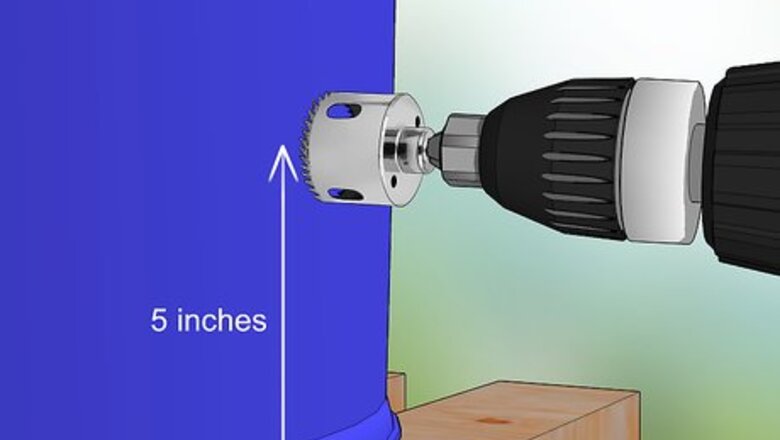
views
DIY Rain Water Collector
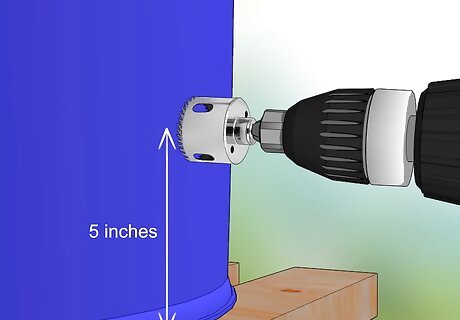
Drill a hole near the bottom of a large plastic garbage can. Use a hand drill to carefully drill a hole on the side of your garbage can, about 5 in (13 cm) from the bottom. This hole will be used for your spigot, so make sure to use a drill bit that’s a little bit smaller than or the same size as the spigot. Make sure that your garbage can is clean, and that it wasn’t used to store any hazardous materials that could potentially contaminate your rainwater. Food-grade plastic containers are also great to consider for a rain barrel. Alternative: Feel free to buy a premade rain barrel if you don’t have the time or equipment to make your own. Before you set it up, make sure that it comes with a screen, overflow tube, and hose.
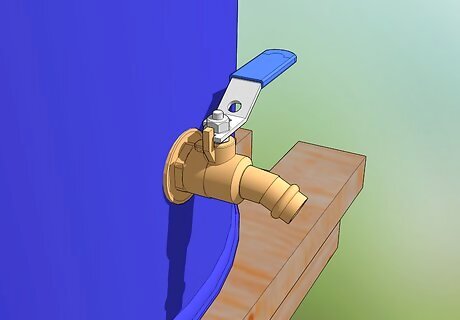
Insert a spigot into the hole. Slide a metal washer onto the screw end of the spigot, and then fit a snug rubber washer over the screws to prevent leakage. Apply a thick layer of waterproof sealant over the rubber washer, insert the spigot into the hole, and let it dry for as long as instructed on the package. Once the sealant is dried, secure it on the inside of the barrel by sliding on another rubber washer and metal washer. If you don’t have any waterproof sealant, use watertight Teflon tape.
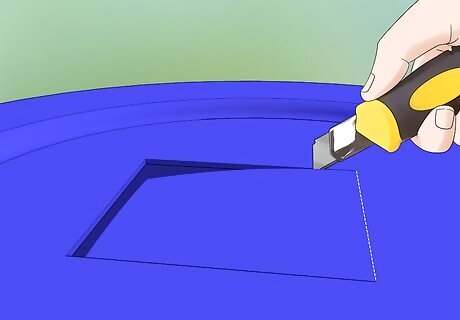
Cut a hole in the lid to collect water from your home’s downspout. Use a box cutter to cut the collection hole, and make it big enough to accommodate the water flow from your downspout. Place it near the side of the lid, following the curve, so it can fit comfortably against the wall of your house. Place the barrel under your downspout and make a mark on the lid for the hole location. Don’t place the hole too close to the center of the lid; if your downspout is against the side of your house, there won’t be enough room for you to place the hole directly under it.
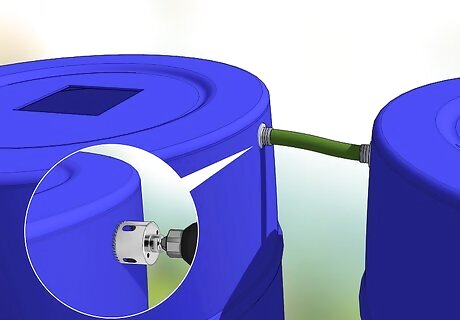
Make a second hole to release overflow. Suppose the barrel collects a lot of rain. In that case, it’ll need an overflow opening to release the extra water. Using your drill or box cutter, cut 1-2 smaller holes in the lid to accommodate this extra flow. If you want to collect the overflow water, build a second rain barrel. Run a short length of hose or PVC pipe from the second barrel to the overflow hole in the first barrel to allow the extra water to run through.
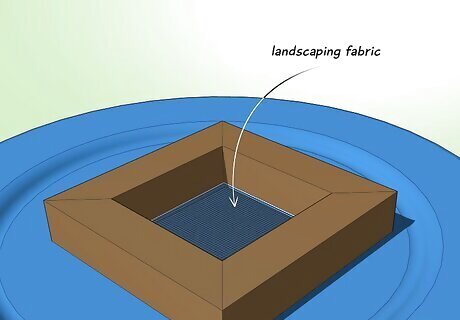
Put landscaping fabric over the top to keep out pests. Before you secure the garbage can lid, cut a large piece of landscaping fabric or metal screening and place it over the entire opening. Cut it large enough that about 1 ft (30 cm) of fabric sticks out over the can. Then, attach the lid to secure it in place. Landscaping fabric is made of a fine mesh, which will allow water to pass through while keeping out mosquitoes and other pests.

Place the barrel under your downspout. Now that your barrel is constructed, simply set it below your downspout to collect water. To make it more convenient to use, create a small platform of bricks or another solid, durable material and set the barrel on top. This will give you more room to fill up water cans or buckets of water. Thoroughly clean your gutters before collecting rainwater from your downspout. If you want to connect a hose to the spigot, raising the barrel a bit will also give you more water pressure. Place a rain barrel underneath each downspout to collect more rainwater. If you use your water for gardening, you can pour it out of the spigot as-is. If you plan to use it for cooking, drinking, or cleaning, filter it first.
Advanced Collection Systems
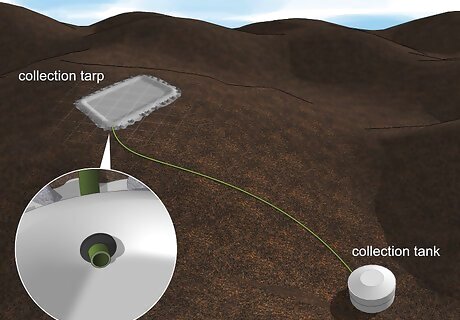
Tarp system Clear a large section of highly elevated land, stacking extra dirt around the edges. Drape a large piece of tarp over this dirt section and weigh down the edges with rocks to protect it from the wind. Run a drainpipe from the lowest corner of the tarp to the collection tank—an IBC tote tank or rain barrel works well for this. Seal the pipe's entry point through the tarp with a waterproof sealant to make the connection secure. Use corner pipe attachments if you need to lift the water into the tank; the pressure should be high enough to pump it upwards on its own. Set up a screen over the entry point of the tank to prevent bugs and debris from getting into your water supply.
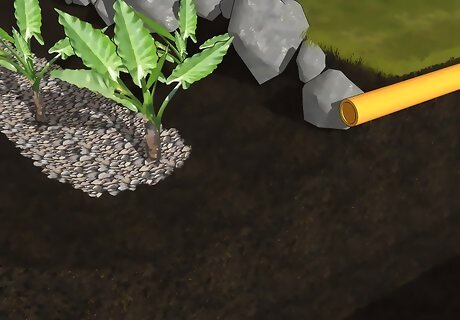
Rain garden Decide what shape and size you’d like to make your rain garden—a standard rain garden is typically 100 to 300 sq ft (9.3 to 27.9 m). Outline the perimeter of your future rain garden with a hose and dig between 4 to 10 in (10 to 25 cm) down in this area. Then, connect an elbow pipe joint to the bottom of your gutter, and connect this to a length of pipe that feeds into the pit. Cover the pipe with dirt, and then fill in the garden with gravel, small stones, and any plants you’d like to grow. Place boulders around the edge of your rain garden as a decorative touch.
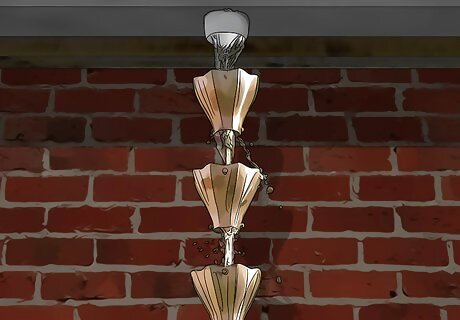
Rain chain A rain chain connects to the water flow in your gutter, redirecting it down a series of copper or metal cups for a pleasing waterfall effect. To use one, simply remove your gutter’s downspout and fasten the rain chain’s hook through the pipe. Place a rain barrel or another storage unit underneath the chain to collect the water.
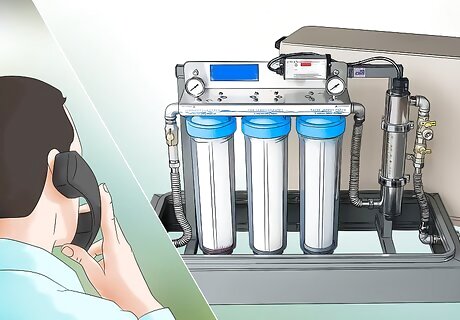
Collection and filtration system If you’re interested in a full water collection and filtration system for your home, the easiest option might be to build it with the help of a landscaping company. They’ll be able to ensure that the collection system works without leakages and that it’s filtered properly for your use. Ask if a cistern-style system could work well for your home. Cisterns are typically built beneath your property.
Is it legal to collect rainwater?
Yes, but the specific regulations depend on the state you live in. In the US, rainwater collection is state-regulated. Some states give homeowners total freedom over their rainwater collection systems, while others require homeowners to consult specific codes, boards, or agencies. Certain states even provide incentives for citizens who participate in rainwater collection—go here to see what your state’s policy is.
Rainwater Uses
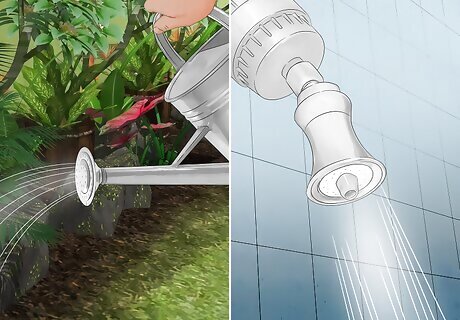
You can use rainwater indoors and outdoors. Rainwater typically has plenty of natural benefits that you can’t always find in other water sources, like being chlorine-free and having a neutral pH. It’s a great, natural way to water your garden or houseplants and irrigate your lawn. You can also use it to wash vehicles or pets and fill pools, ponds, or water features. If you plan to use it indoors to provide drinking water for pets, livestock, or humans or use it for showering or bathing, to run a dishwasher or washing machine, or for a utility sink, make sure you filter it first! Rainwater can also be stored in case of emergency. You could use it for fire suppression or to drink or cook with if your regular water supply is compromised or shut off (so long as you filter, boil, or distill it before consumption).
Rainwater Benefits
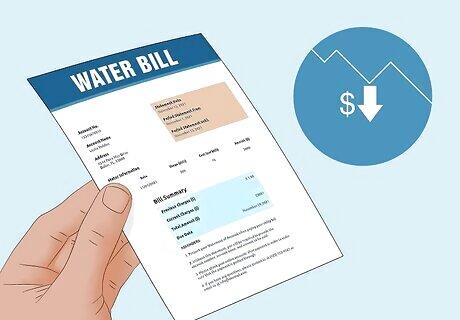
Water conservation Rainwater collection systems let you recycle water for household use. Using this free source of water means less water you have to use in your own home, which means a cheaper water bill over time.
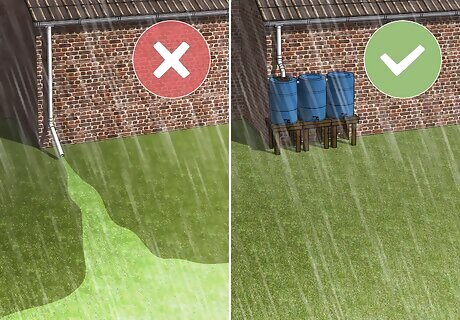
Stormwater management Stormwater is the technical term for run-off that occurs after a storm and gets collected in natural bodies of water (e.g., rivers, ponds, etc.). Having a rainwater collection system in your home can help lessen the stormwater runoff around your property, which can contribute to environmental issues like water pollution and soil erosion.
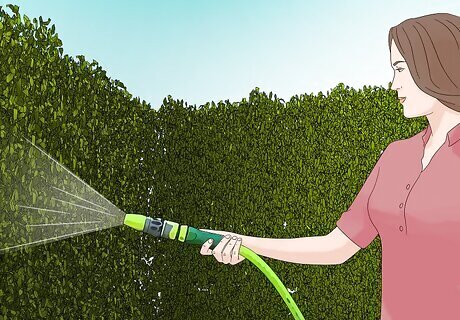
Cost efficiency During the warmer weather, landscaping and lawn care make up a huge portion of a household’s water usage—around 40%, in fact! Reusing rainwater to care for your property can help you save money in the long run. Some communities even offer incentives for rainwater collection.
Best Practices for Rainwater Collection
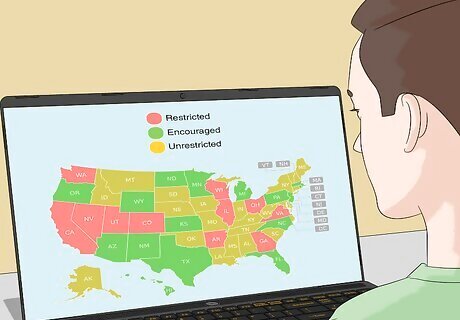
Confirm if your state has any rainwater regulations in place. While some states are totally hands-off when it comes to rainwater collection, other states require you to follow certain plumbing codes or other pieces of legislation. Double-check what your state’s policy is so you can enjoy your rainwater without any complications.
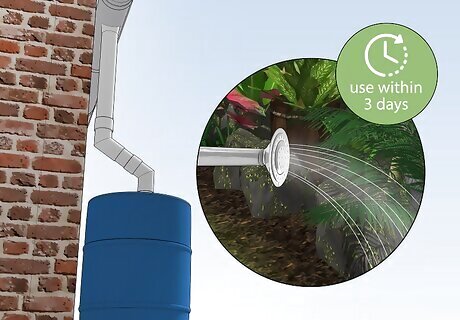
Try to use your rainwater sooner rather than later. Some agriculture specialists suggest repurposing your water within 3 days of a rainstorm to prevent mosquitoes from setting up shop in your rain barrel. You can also stick a bacterium larvicide in your rainwater barrel if you don’t have the time (or reason) to use your rainwater that quickly. When you can, check that the filter screens are secure so mosquitoes can’t get in.
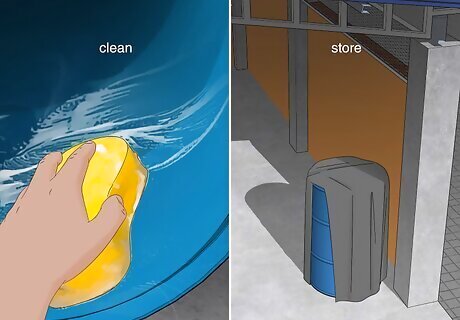
Clean and store your rain barrel when you’re not using it. Before you put your rain barrel away in the cooler months, drain out all the water and clear away any debris. Then, give the inside of the barrel a good wash with detergent. For long-term storage, flip the barrel over or leave it covered up. Water expands when it freezes, which can spell long-term damage for your rain barrel if you leave it filled up.


















Comments
0 comment